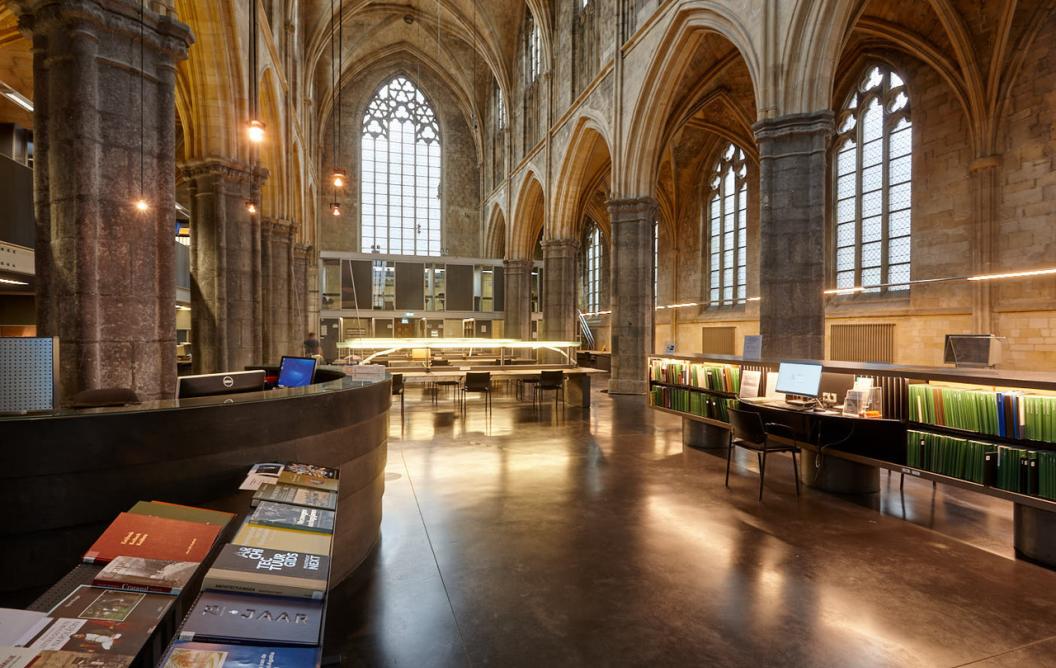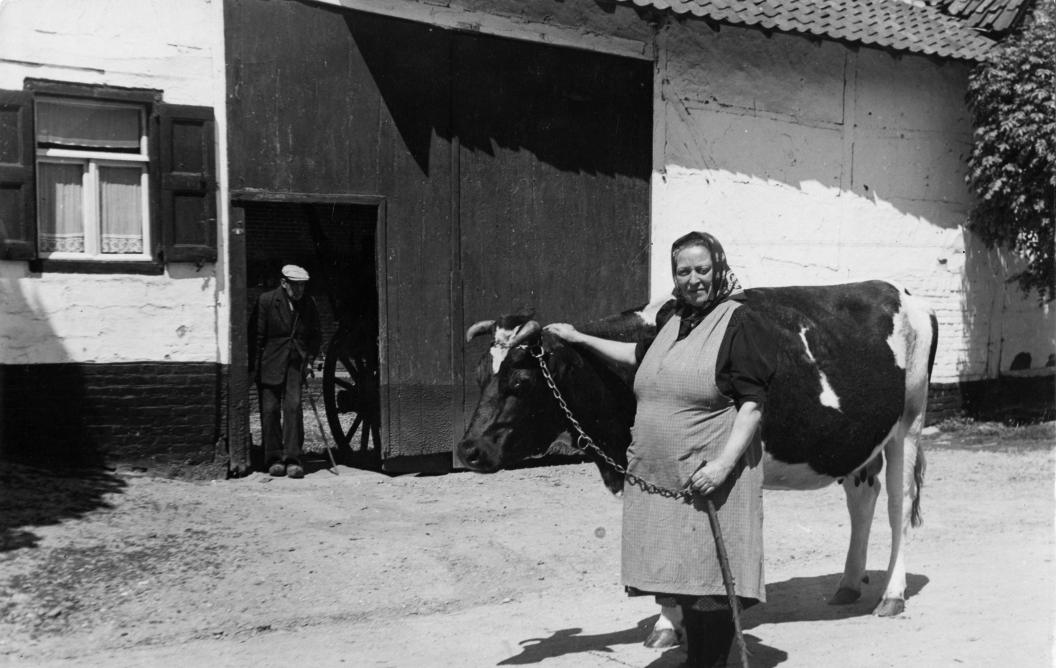75 years of the Social Historical Centre for Limburg: the leading archive of regional heritage
In 1949, a group of prominent Limburg residents founded the Social Historical Centre for Limburg (SHCL). Their aim: to preserve the history of social life in Limburg for posterity. This year, the centre celebrates its 75th anniversary. A wonderful milestone, of which its director, Professor Nico Randeraad, is justifiably proud. “Limburg is the only province with its own centre for social heritage. This makes us unique in the Netherlands.”
The SHCL is funded by subsidies from Maastricht University and the Province of Limburg. It manages the archives and collections of individuals, companies and institutions that played—and continue to play—an important role in the social, economic and cultural life of Limburg in the 19th and 20th centuries. “If you laid them all out, we have no less than five kilometres of archive boxes and three kilometres of books and magazines that contain a wealth of information,” Randeraad says. “We also have a well-stocked library and a study room. Everyone is welcome to do research there. And of course, we conduct our own research, which we publish regularly in our yearbook and other outlets.”
ENCI archive
The centre regularly adds archives to its collection. Last year it became the new owner of the company archive and photo and film documentation of ENCI Maastricht, a cement factory. “The complete archive is 500 metres long,” Randeraad enthuses. “That’s 10% of our total collection.”
SHCL staff are currently working to make this archive accessible to researchers and the public. “It’s been cleaned up and repacked in acid-free boxes. Now we’re in the process of making an inventory, with all the documents described, ordered and numbered. Later in the process, staples, paper clips and plastics are removed. It’s a huge job that will take at least a couple of years. Fortunately, we can count on the help of former ENCI employees and volunteers with an interest in history. We aim to have everything ready by 2026. That’s the 100th anniversary of ENCI’s founding.”
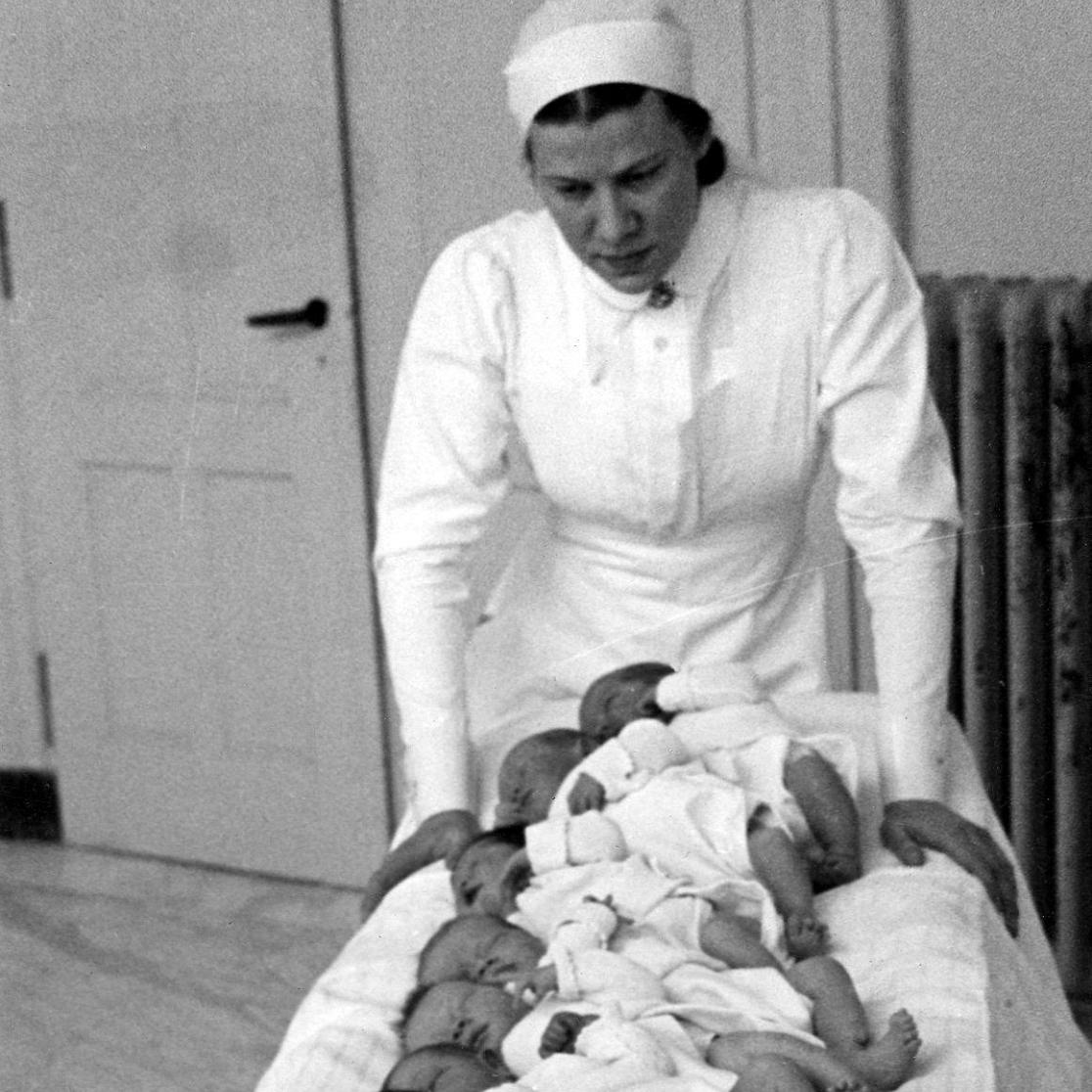
Ten new-borns on one bed. Sister A.M. Rulkens, head midwife, watches over them. Heerlen, circa 1950.
Pottery pattern books
The SHCL also has other interesting collections. “We’re very pleased with our fantastic collection of flags and banners from Limburg associations and companies. We also manage the archives of the Maastricht pottery factories, including the pattern books of De Sphinx, a renowned Dutch pottery firm. They contain the different motifs that have been used to decorate the pottery. We’ve digitised these books so that researchers, collectors and pottery enthusiasts can consult them.”
Another drawcard for visitors is the collection of miners’ ID cards. “This archive dates back to the beginning of the 20th century,” Randeraad continues. “Last May, we organised an open day for former miners and their families, so they could view the cards. There was a lot of interest, including from the media. The NOS picked it up on the evening news, which generated even more interest. We now have a waiting list of roughly 1500 people who all want to view the archive. Why? These ID cards are among the last remaining tangible artifacts of Limburg’s mining past—I think that’s what appeals to people. It’s how we keep a piece of history alive.”
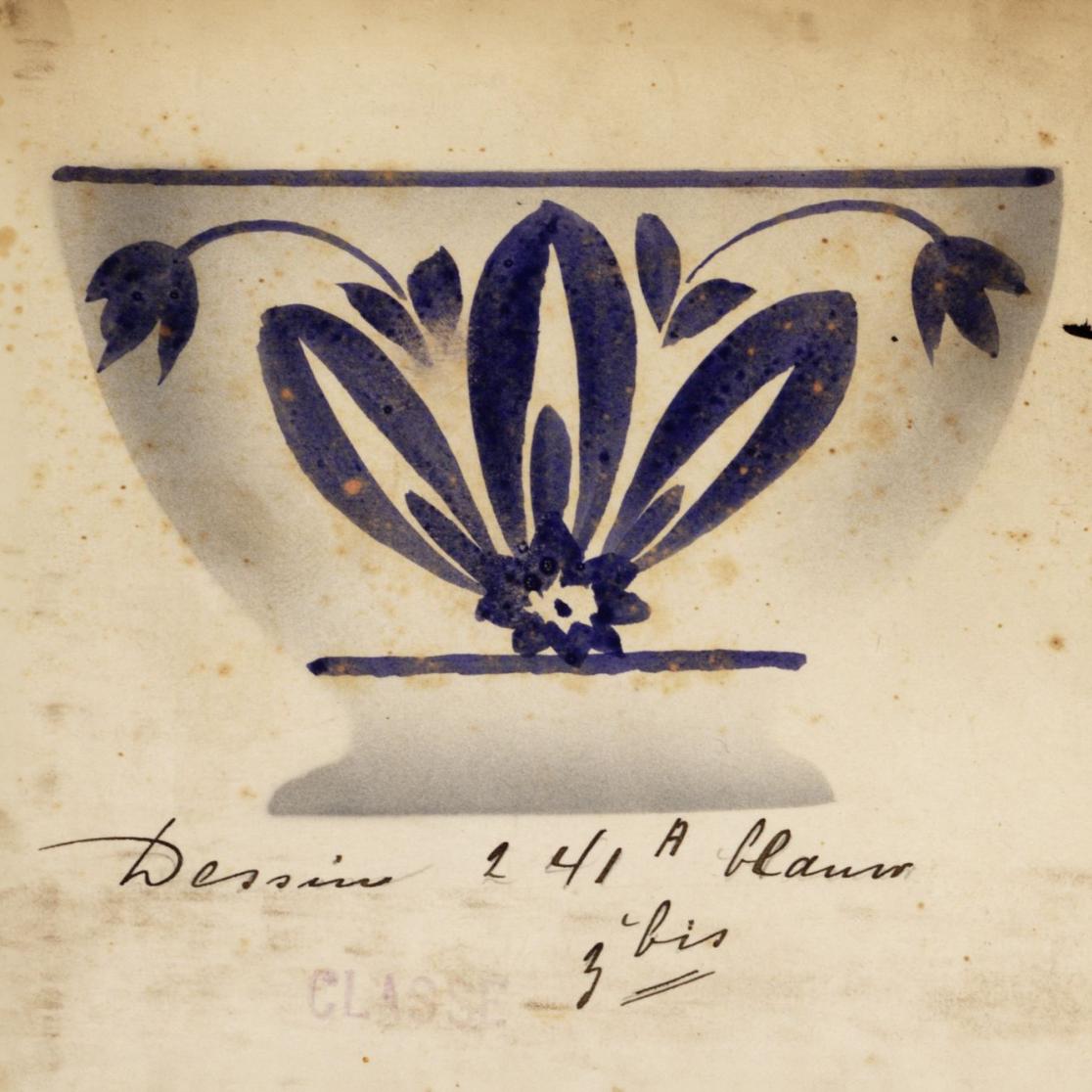
Director
Randeraad has been the centre’s director since late 2018. The position came his way by chance. “I was working in the History department of UM’s Faculty of Arts and Social Sciences. The board of the SHCL asked me to fill the position on an interim basis. They were happy with me and vice versa, so I was offered a permanent position in 2020.”
He still has a connection to UM: the role of director is linked to the professorship in Comparative Regional History Specialising in Limburg and Neighbouring Areas. “Quite a mouthful,” he laughs. “What it means is that I’m an endowed professor and teach at FASoS once a week. The great thing is that I work at the interface between the university and society. I conduct local research and am closely involved in all kinds of societal issues. This brings me into contact with companies, associations, museums and Limburg residents who are interested in history. So it’s a very interesting position with a lot of social significance.”
What about the centre’s plans for the future? “Besides the ENCI archive, which will take up a lot of our time in the coming year, the letterhead project requires our attention. We have a great collection of letters from Limburg companies and associations from the 19th and 20th centuries. The letterheads are often works of art in themselves. We want to digitise and analyse them. We have about 25,000 of them, so that will keep us busy for a while. And of course, we’ll continue to work on getting new audiences excited about our collection through our website, LinkedIn, Facebook and Instagram. There’s no shortage of work to do.”
Text: Martina Langeveld
“There’s no shortage of work to do.”
Nico RanderaadAlso read
-
Globalisation & Law Network seminar with Rodrigo Vallejo Garretón
On 4 July 2025, the Globalisation & Law Network had the pleasure of welcoming Dr Rodrigo Vallejo Garretón, Assistant Professor in Private Law at the University of Amsterdam.
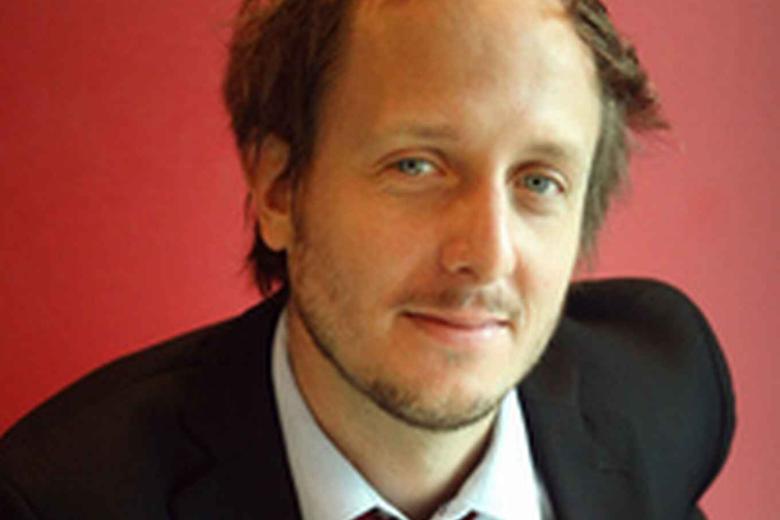
-
Language policy in European higher education
The increased Englishization of higher education is under discussion in several European countries. What does a balanced language policy look like that does justice to both the increasingly international character of higher education and a country's language-related cultural identity? At an...

-
A pinch of LSD, taken twice daily with meals
Fast forward to 2040: if you have ADHD or another psychological disorder, the doctor may no longer prescribe Ritalin or antidepressants, but instead a low dose of magic mushrooms, truffles or LSD. Associate professor Kim Kuypers is studying the use of psychedelics as potential medicines of the...

